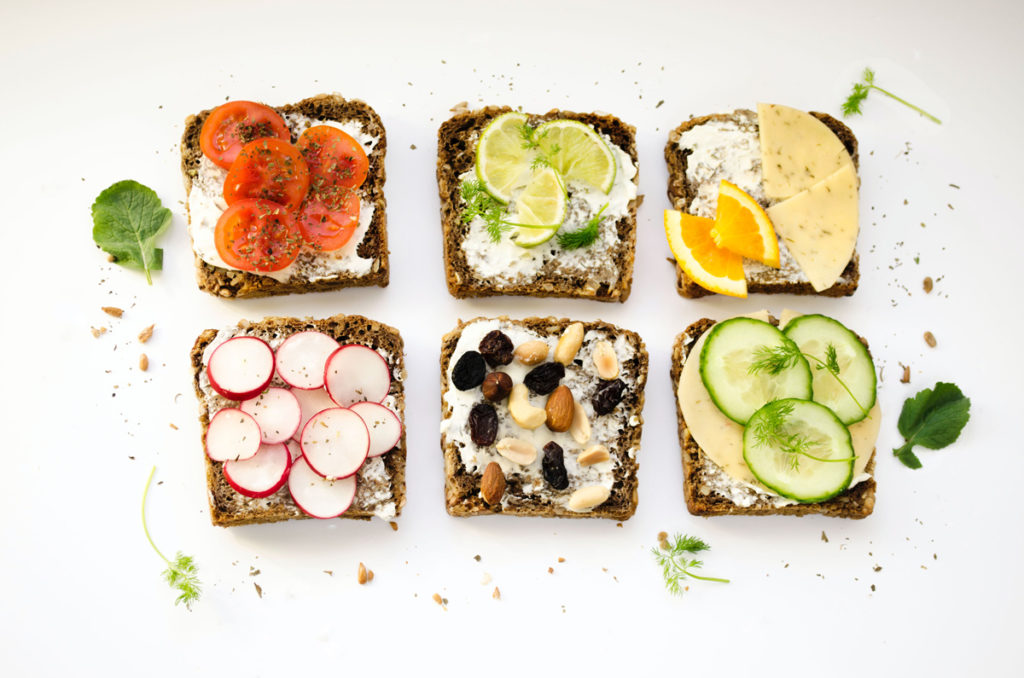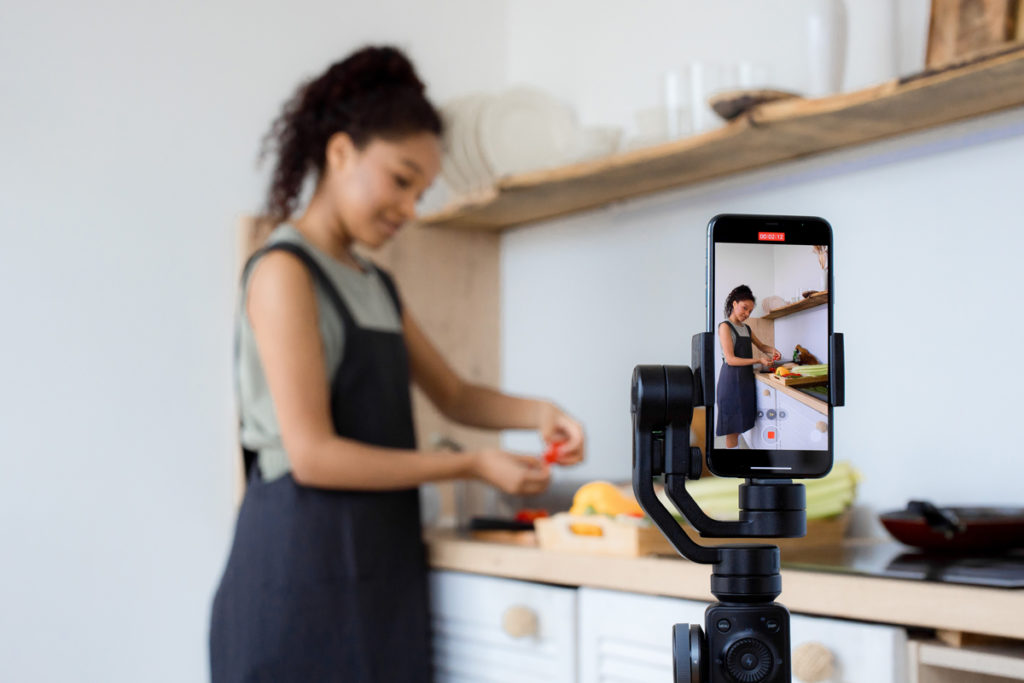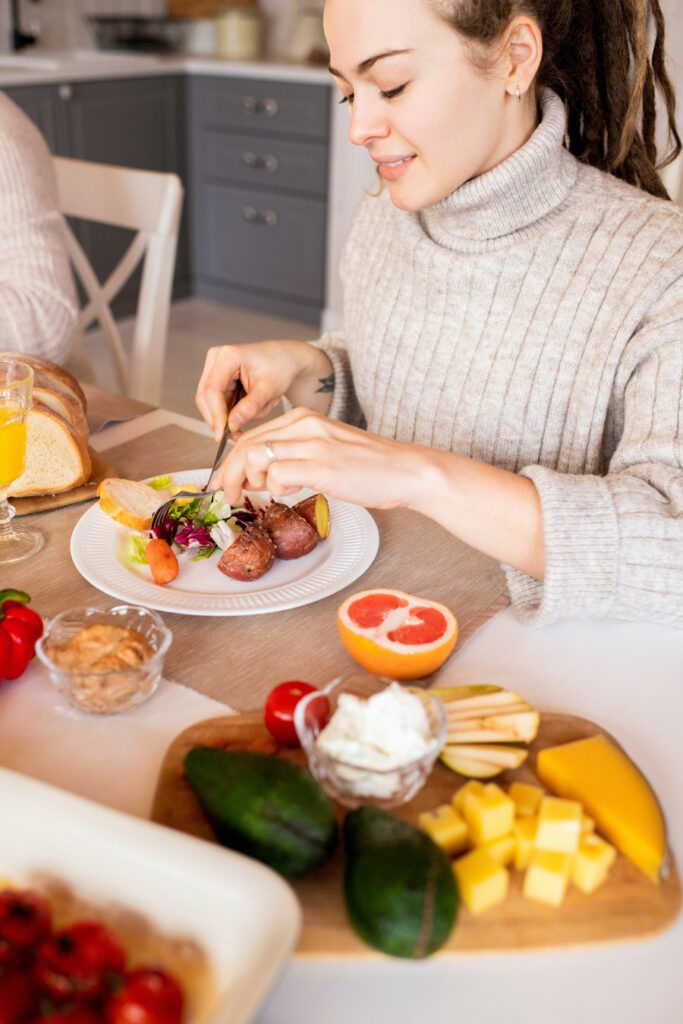Today’s consumers are more knowledgeable, tech-savvy, and decision-conscious in the kitchen than ever, regardless of their diet and shopping habits. Brands have seized the opportunity to market to this new multi-faceted consumer, and as a result, our kitchens have reached next-level functionality. So, who are the new kitchen consumers?
When it comes to contemporary shoppers, there is no one-size-fits-all label. Most of us will vacillate between a few consumer archetypes, depending on our current priorities. For example, I prefer to eat for health and wellness, but most of the time, convenience is, instead, the top priority.
Armed with a deep understanding of the consumer archetypes in today’s kitchens, brands can be better prepared to develop products and marketing that speak directly to the priorities of the modern shopper.

Kitchen consumers can be divided into six primary categories, or archetypes, if you will:
Wellbeing Warriors focus on food for health. They prioritize food’s ability to improve physical and mental health and look for healthy recipes.
Eco Advocates put sustainability, low food waste, and plant-based meals first. Low-impact kitchens are a key component of the Eco Advocate’s kitchen, and while plant-based food is welcomed and a great way to stay sustainable, not every one of these consumers follows a strictly plant-based diet.
Convenience Seekers look for ways to reclaim their time in a busy world. They desire streamlined, efficient processes that make sense when partnered with tech or design to enhance the convenient experience.
Aspirational Eaters love the act of cooking—they look to explore new recipes, try high-end ingredients, and invest in their kitchen spaces. From a complex, homemade recipe for dinner to a simple jelly or jam recipe, these chefs love experimentation and learning in the kitchen.
Gastronomic Globalists explore different cuisines, often going back to their roots. They combine a variety of cooking methods and flavors to create entirely new dishes and styles of cooking in their home.
Lastly, Frugal Foodies are fond of saving money, as the name implies. They don’t want to sacrifice the quality of their food but look for ways to spend less as inflation pummels shoppers across the globe.

Cooking Redefined
Innovations in home cooking, like instant pots and air fryers, help make tasty foods healthier by reducing extra grease (appealing to Wellness Warriors) and speeding up the cooking process (for our Convenience Seekers). Countertop gardens are prioritized in the sustainable home of the Eco Advocate, who, if not a Frugal Foodie, might be inclined to purchase a countertop composter, to eliminate 90% of food waste and turn it into food for plants. A variety of kitchenware makes a home-cooked meal in minutes possible—while specialty pans are designed for versatility and easy experimentation with new foods—perfectly positioned for our Gastronomical Globalists and Aspirational Eaters. Meanwhile, fresh-keeping kitchen devices can save food for nearly twice as long, reducing costs and food waste, appealing to our Frugal Foodies and Eco Advocates.

The Evolving Kitchen
From the avocado green laminate countertops of the 1960s and the huge refrigerators and pastels of the 1990s to the sleek Instagram-worthy kitchen of today—kitchens have consistently evolved with consumer preferences. Essentially a time capsule of culture, the American kitchen continues to reflect our shifting cultural values, family norms, and technologies.

Social Cooking
With recipes catering to every dietary need and culinary interest, the Internet has become the world’s largest cookbook and cooking school. Since the rise of social media, the DIY movement has taken every consumer segment by storm. You can learn how to make just about anything on YouTube and TikTok—and the extra pandemic downtime resulted in an explosion of available food- and cooking-related content.
DIY videos teach Eco Advocates and Frugal Foodies how to live sustainably and frugally by showing us how to use every last crumb of a grocery trip and sharing easy freshness and Convenience Seeker-loving time-saving hacks. We’ve also seen the meteoric rise in the interest of household Influencers, such as Alexis Nikole Nelson, who share tips on foraging for natural, locally-available ingredients and ways to transform the everyday plants we encounter into delicious meals.
A proliferation of online video content has led new generations into the kitchen, inspired by what they’ve seen and want to try themselves. Popular TikTok recipes like whipped coffee, salmon rice bowls, cloud bread, and feta pasta have been replicated by an astounding number of people (we’re looking at you, Gastronomical Globalists and Aspirational Eaters) who are casting aside cookbooks in favor of viral inspiration. Those archetypes love the ability to learn new techniques and source hard-to-find ingredients online. They are far more entranced by a product if it speaks to a cultural connection, presents unique flavors, or has the ability to enhance the meal.
Tech For Convenience
Convenience, though less of a focus for our Aspirational Eaters and Gastronomic Globalists, is still prioritized by many consumers to preserve personal time.
New tech for food-delivery services keeps food fresh in transit, allowing Convenience Seekers to easily order groceries online from anywhere without the need to spend a chunk of their day at the store. Restaurant delivery is also a popular option these days, with 60% of Americans spending more on food delivery now than before the pandemic.
Other tech products automatically refill ingredients through auto-inventory programs. Samsung uses AI with Whisk, which provides recipe suggestions based on the ingredients available in your kitchen—a dream for our Aspirational Eaters and Convenience Seekers. Some products even work to reduce the time or effort spent prepping food, giving our more exploration-focused eaters more time to cook and try new flavors.
Most contemporary consumers desire convenience in their kitchen experience, no matter their archetype, and tech is a great way to fill that gap.

Loving Food and Ourselves
Everyone needs to eat, but day-to-day what and how we eat might look different for each of us. Wellness Warriors view food as fuel and Convenience Seekers can view food as a necessary daily activity, while Aspirational Eaters look forward to their opportunities to create exciting meals. But some recent movements in the areas are challenging the status quo in the kitchen for all our archetypes.
Body positivity has been trending through all aspects of our current world, and recently, we’ve been releasing ourselves from the shackles of bland diet shakes or meal plans. Food neutrality is a prominent social ideal that intends to repair the poorly modeled relationships we have with our meals. Food-as-medicine is a take on eating healthful foods as self-care for improved mental and physical health. Brands who want to truly understand today’s consumers should consider how these movements impact our minds, bodies, and kitchens.
The Evolution Continues
People often don’t fit into a single archetype, no matter how encompassing the definition might be. But by understanding today’s kitchen consumers and the trends driving their buying behavior, brands can get a fork up over their kitchen competition.
With consumers eager to reduce waste and cost and experiment in the kitchen, there lies a great opportunity to meet the very specific needs of each type of kitchen consumer. Consumers want personalization and a chance to interact with brands that make them feel seen. With continued investment in developing products to improve consumers’ lives, our kitchens will continue to evolve for the better.





